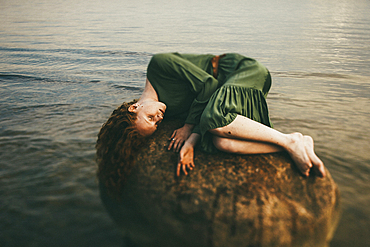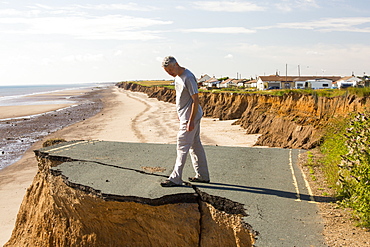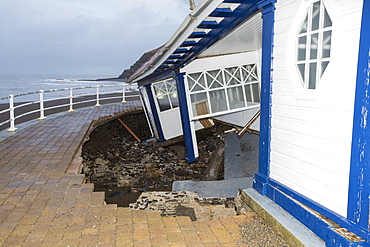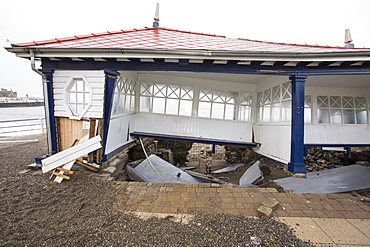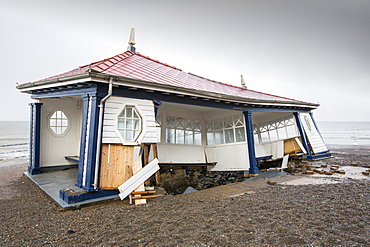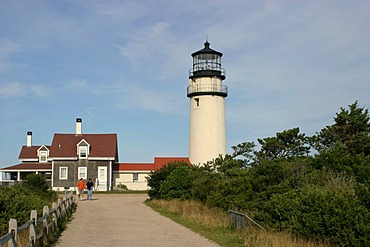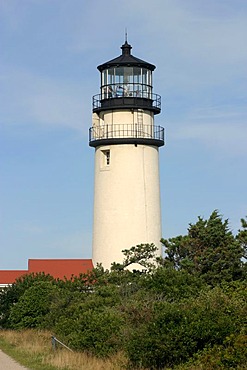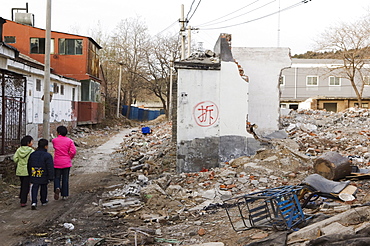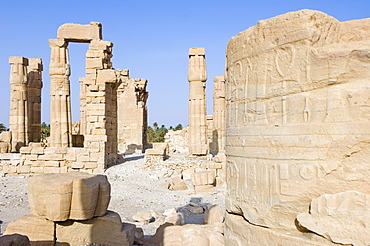Recent searches
Loading...
1178-41779 - Caucasian woman wearing dress laying on rock at beach
857-95431 - A collapsed coastal road at between Skipsea and Ulrome on Yorkshires East Coast, near Skipsea, UK. The coast is composed of soft boulder clays, very vulnerable to coastal erosion. This section of coast has been eroding since Roman times, with many villages having disappeared into the sea, and is the fastest eroding coast in Europe. Climate change is speeding up the erosion, with sea level rise, increased stormy weather and increased heavy rainfall events, all playing their part.
857-95432 - A collapsed coastal road at between Skipsea and Ulrome on Yorkshires East Coast, near Skipsea, UK. The coast is composed of soft boulder clays, very vulnerable to coastal erosion. This section of coast has been eroding since Roman times, with many villages having disappeared into the sea, and is the fastest eroding coast in Europe. Climate change is speeding up the erosion, with sea level rise, increased stormy weather and increased heavy rainfall events, all playing their part.
857-95435 - A collapsed coastal road at near Aldbrough on Yorkshires East Coast, near Skipsea, UK. The coast is composed of soft boulder clays, very vulnerable to coastal erosion. This section of coast has been eroding since Roman times, with many villages having disappeared into the sea, and is the fastest eroding coast in Europe. Climate change is speeding up the erosion, with sea level rise, increased stormy weather and increased heavy rainfall events, all playing their part.
857-95433 - A collapsed coastal road at between Skipsea and Ulrome on Yorkshires East Coast, near Skipsea, UK. The coast is composed of soft boulder clays, very vulnerable to coastal erosion. This section of coast has been eroding since Roman times, with many villages having disappeared into the sea, and is the fastest eroding coast in Europe. Climate change is speeding up the erosion, with sea level rise, increased stormy weather and increased heavy rainfall events, all playing their part.
857-95437 - A collapsed coastal road at between Skipsea and Ulrome on Yorkshires East Coast, near Skipsea, UK. The coast is composed of soft boulder clays, very vulnerable to coastal erosion. This section of coast has been eroding since Roman times, with many villages having disappeared into the sea, and is the fastest eroding coast in Europe. Climate change is speeding up the erosion, with sea level rise, increased stormy weather and increased heavy rainfall events, all playing their part.
857-95436 - A collapsed coastal road at between Skipsea and Ulrome on Yorkshires East Coast, near Skipsea, UK. The coast is composed of soft boulder clays, very vulnerable to coastal erosion. This section of coast has been eroding since Roman times, with many villages having disappeared into the sea, and is the fastest eroding coast in Europe. Climate change is speeding up the erosion, with sea level rise, increased stormy weather and increased heavy rainfall events, all playing their part.
857-95434 - A collapsed coastal road at Barmston on Yorkshires East Coast, near Skipsea, UK. The coast is composed of soft boulder clays, very vulnerable to coastal erosion. This section of coast has been eroding since Roman times, with many villages having disappeared into the sea, and is the fastest eroding coast in Europe. Climate change is speeding up the erosion, with sea level rise, increased stormy weather and increased heavy rainfall events, all playing their part.
857-95438 - Smashed concrete sea defenses at Ulrome near Skipsea on Yorkshires East Coast, UK. The sea has eroded past the barriers and left them stranded further down the beach. The coast is composed of soft boulder clays, very vulnerable to coastal erosion. This section of coast has been eroding since Roman times, with many villages having disappeared into the sea, and is the fastest eroding coast in Europe. Climate change is speeding up the erosion, with sea level rise, increased stormy weather and increased heavy rainfall events, all playing their part.
746-88434 - Radial crevasses of the glacier Pasterze near Grossglockner. the radial crevasse are the first signs of the collapsing of another glacier area and the forming of new dead ice, Europe, central europe, Austria
911-10750 - The Remains of the Godwin battery on the beach at Kilnsea at the head of Spurn point on Yorkshires East Coast, UK. Initially constructed during the First World War, the Godwin Battery was added to during the Second World War. It comprised of gun emplacements, search light, barracks, officers’ mess, and a hospital. This section of coastline is the fastest eroding coastline in Europe. The soft boulder clay cliffs are easily eroded and have been eroding since Roman Times, but recently the climate change impacts of increased stormy weather, increased heavy rainfall events and sea level rise have accelerated the rate of erosion. The average rate of attrition is 1.5metres per year, last year it was 5 metres.
911-10758 - After a week of high tides, storm surges and storm force winds, the sea front promenade of Aberystwyth in Wales has been devastated, with millions of £'s of damage. The crsahing waves punched a large hole in the sea wall and has collapsed Aberystwyth's iconic, Victorian promenade shelter, which has stood for over 100 years. This picture was taken on Wednesday 8th January, 2014, the day the council started to try and clear the thousands of tonnes of beach rubble off the sea front road.
911-10756 - After a week of high tides, storm surges and storm force winds, the sea front promenade of Aberystwyth in Wales has been devastated, with millions of £'s of damage. The crsahing waves punched a large hole in the sea wall and has collapsed Aberystwyth's iconic, Victorian promenade shelter, which has stood for over 100 years. This picture was taken on Wednesday 8th January, 2014, the day the council started to try and clear the thousands of tonnes of beach rubble off the sea front road.
911-10749 - The Remains of the Godwin battery on the beach at Kilnsea at the head of Spurn point on Yorkshires East Coast, UK. Initially constructed during the First World War, the Godwin Battery was added to during the Second World War. It comprised of gun emplacements, search light, barracks, officers’ mess, and a hospital. This section of coastline is the fastest eroding coastline in Europe. The soft boulder clay cliffs are easily eroded and have been eroding since Roman Times, but recently the climate change impacts of increased stormy weather, increased heavy rainfall events and sea level rise have accelerated the rate of erosion. The average rate of attrition is 1.5metres per year, last year it was 5 metres.
911-10757 - After a week of high tides, storm surges and storm force winds, the sea front promenade of Aberystwyth in Wales has been devastated, with millions of £'s of damage. The crsahing waves punched a large hole in the sea wall and has collapsed Aberystwyth's iconic, Victorian promenade shelter, which has stood for over 100 years. This picture was taken on Wednesday 8th January, 2014, the day the council started to try and clear the thousands of tonnes of beach rubble off the sea front road.
911-10166 - Dunes collapsing at the head of the beach on the Northumberland coast after being undercut by a storm and high tide.
911-10073 - A collapsed coastal road at Barmston on Yorkshires East Coast, near Skipsea, UK. The coast is composed of soft boulder clays, very vulnerable to coastal erosion. This sectiion of coast has been eroding since Roman times, with many villages having disappeared into the sea, and is the fastest eroding coast in Europe. Climate change is speeding up the erosion, with sea level rise, increased stormy weather and increased heavy rainfall events, all palying their part.
911-10074 - A Second world War lookout post leaning alarmingly and about to tumble over the edge of the cliff near Aldbrough on Yorkshires East Coast, UK. The coast is composed of soft boulder clays, very vulnerable to coastal erosion. This section of coast has been eroding since Roman times, with many villages having disappeared into the sea, and is the fastest eroding coast in Europe. Climate change is speeding up the erosion, with sea level rise, increased stormy weather and increased heavy rainfall events, all playing their part.
911-10071 - A collapsed coastal road at between Skipsea and Ulrome on Yorkshires East Coast, near Skipsea, UK. The coast is composed of soft boulder clays, very vulnerable to coastal erosion. This sectiion of coast has been eroding since Roman times, with many villages having disappeared into the sea, and is the fastest eroding coast in Europe. Climate change is speeding up the erosion, with sea level rise, increased stormy weather and increased heavy rainfall events, all palying their part.
911-10069 - Concrete sea defences at Beach Bank Caravan Park in Ulrome near Skipsea on Yorkshires East Coast, UK. The coast is composed of soft boulder clays, very vulnerable to coastal erosion. This section of coast has been eroding since Roman times, with many villages having disappeared into the sea, and is the fastest eroding coast in Europe. Climate change is speeding up the erosion, with sea level rise, increased stormy weather and increased heavy rainfall events, all playing their part.
911-10070 - A collapsed coastal road at near Aldbrough on Yorkshires East Coast, near Skipsea, UK. The coast is composed of soft boulder clays, very vulnerable to coastal erosion. This sectiion of coast has been eroding since Roman times, with many villages having disappeared into the sea, and is the fastest eroding coast in Europe. Climate change is speeding up the erosion, with sea level rise, increased stormy weather and increased heavy rainfall events, all palying their part.
911-10066 - A collapsed coastal road at Easingotn on Yorkshires East Coast, near Skipsea, UK. The coast is composed of soft boulder clays, very vulnerable to coastal erosion. This sectiion of coast has been eroding since Roman times, with many villages having disappeared into the sea, and is the fastest eroding coast in Europe. Climate change is speeding up the erosion, with sea level rise, increased stormy weather and increased heavy rainfall events, all palying their part.
911-10068 - A collapsed coastal road at between Skipsea and Ulrome on Yorkshires East Coast, near Skipsea, UK. The coast is composed of soft boulder clays, very vulnerable to coastal erosion. This sectiion of coast has been eroding since Roman times, with many villages having disappeared into the sea, and is the fastest eroding coast in Europe. Climate change is speeding up the erosion, with sea level rise, increased stormy weather and increased heavy rainfall events, all palying their part.
911-10072 - A collapsed coastal road at between Skipsea and Ulrome on Yorkshires East Coast, near Skipsea, UK. The coast is composed of soft boulder clays, very vulnerable to coastal erosion. This sectiion of coast has been eroding since Roman times, with many villages having disappeared into the sea, and is the fastest eroding coast in Europe. Climate change is speeding up the erosion, with sea level rise, increased stormy weather and increased heavy rainfall events, all palying their part.
911-10067 - A collapsed coastal road near Skipsea on Yorkshires East Coast, UK. The coast is composed of soft boulder clays, very vulnerable to coastal erosion. This sectiion of coast has been eroding since Roman times, with many villages having disappeared into the sea, and is the fastest eroding coast in Europe. Climate change is speeding up the erosion, with sea level rise, increased stormy weather and increased heavy rainfall events, all playing their part.
832-337094 - Highland Light (Cape Cod Light). The station was established in 1797, the present buildings date from 1857. At that time, the lighthouse was still 150m away from the 40m cliffs, but continuing erosion imperiled the location. At the end of the 20th century
832-337093 - Highland Light (Cape Cod Light). The station was established in 1797, the present buildings date from 1857. At that time, the lighthouse was still 150m away from the 40m cliffs, but continuing erosion imperiled the location. At the end of the 20th century
832-337089 - Highland Light (Cape Cod Light). The station was established in 1797, the present buildings date from 1857. At that time, the lighthouse was still 150m away from the 40m cliffs, but continuing erosion imperiled the location. At the end of the 20th century
1161-2572 - Buildings demolished in earthquake area of Azad Jammu Kashmir, in village of Pattika, Pakistan
1161-2577 - Demolished buildings seen from helicopter in earthquake area of Azad Jammu Kashmir, Pakistan
1161-2575 - Buildings demolished in earthquake area of Azad Jammu Kashmir, in village of Pattika, Pakistan
1161-2569 - Buildings demolished in earthquake area of Azad Jammu Kashmir, in village of Pattika, Pakistan
1161-2568 - Buildings demolished in earthquake area of Azad Jammu Kashmir, in village of Pattika, Pakistan
1161-2574 - Buildings demolished in earthquake area of Azad Jammu Kashmir, in village of Pattika, Pakistan
1161-2567 - Buildings demolished in earthquake devastated area of Azad Jammu Kashmir, in village of Pattika, Pakistan
1161-2573 - Buildings demolished in earthquake area of Azad Jammu Kashmir, in village of Pattika, Pakistan
1161-2570 - Buildings demolished in earthquake area of Azad Jammu Kashmir, in village of Pattika, Pakistan
1161-2576 - Demolished buildings seen from helicopter in earthquake area of Azad Jammu Kashmir, Pakistan
1161-2571 - Buildings demolished in earthquake area of Azad Jammu Kashmir, village of Pattika, Pakistan
1112-970 - Remains of the abandoned whale station in Port Foster, Deception Island, South Shetland Islands, Antarctica, Polar Regions
911-7798 - A hole caused by a snow bank collapsing over the top of a stream in Coire an Lochain in the Cairngorm mountains, Scotland, United Kingdom, Europe
911-7797 - A hole caused by a snow bank collapsing over the top of a stream in Coire an Lochain in the Cairngorm mountains, Scotland, United Kingdom, Europe
921-30 - Trapers Cabin. fuglehuken (bird), Svalbard, Norway
979-3067 - Views of the dilapidates former cannery site at Butedale along the inside passage in British Columbia, Canada, Pacific Ocean.
979-5119 - Hunter's cabin at Gnalodden in Hornsund (Horn Sound) on the southwestern side of Spitsbergen Island in the Svalbard Archipelago, Barents Sea, Norway
979-3066 - Views of the dilapidates former cannery site at Butedale along the inside passage in British Columbia, Canada, Pacific Ocean. (rr)
979-2081 - The dilapidated cannery site at Butedale, British Columbia, Canada. Note the way the forest has reclaimed this cannery site from the 20th century.
911-2529 - Pavement in Fairbanks collapsing into the ground due to global warming induced permafrost melt, Alaska, United States of America, North America
911-230 - An arched iceberg collapsing into the sea from the Jacobshavn Glacier (Sermeq Kujalleq), Greenland, Polar Regions
911-228 - An arched iceberg collapsing into the sea from the Jacobshavn Glacier (Sermeq Kujalleq), Greenland, Polar Regions
911-2555 - Electricity poles collapsing due to global warming-induced permafrost melt, in Fairbanks, Alaska, United States of America, North America
911-2553 - A lamp post collapsing due to global warming-induced permafrost melt, in Fairbanks, Alaska, United States of America, North America
911-2559 - Detail of cracks in a house collapsing due to global warming-induced permafrost melt, Fairbanks, Alaska, United States of America, North America
911-2552 - A road in Fairbanks collapsing into the ground due to global warming induced permafrost melt, Alaska, United States of America, North America
911-2558 - House collapsing due to global warming-induced permafrost melt, Fairbanks, Alaska, United States of America, North America
911-2528 - House in Fairbanks, moved after it started collapsing into the ground due to global warming induced permafrost melt, Alaska, United States of America, North America
911-2557 - House collapsing due to global warming-induced permafrost melt, Fairbanks, Alaska, United States of America, North America
911-2561 - Electricity poles collapsing due to global warming-induced permafrost melt, in Fairbanks, Alaska, United States of America, North America
911-2546 - House collapsing due to global warming-induced permafrost melt, Fairbanks, Alaska, United States of America, North America
911-229 - An arched iceberg collapsing into the sea from the Jacobshavn Glacier (Sermeq Kujalleq), Greenland, Polar Regions
816-1259 - Famous old bridge reconstructed after collapsing in the war in the old town of Mostar, UNESCO World Heritage Site, Bosnia-Herzegovina, Europe
816-1261 - Famous old bridge reconstructed after collapsing in the war in the old town of Mostar, UNESCO World Heritage Site, Bosnia-Herzegovina, Europe
733-2658 - Girls walking in a neighbourhood Hutong partially destroyed and marked for demolition, Beijing, China, Asia
724-1420 - The temple of Soleb built during the reign of Amenophis III, Soleb, Nubia, Sudan, Africa
724-1422 - The temple of Soleb built during the reign of Amenophis III, Soleb, Nubia, Sudan, Africa
718-953 - Glacier ice melting and icebergs at Perito Moreno, Moreno Glacier, Parque Nacional Los Glaciares, UNESCO World Heritage Site, Patagonia, Argentina, South America
You reached the end of search results
